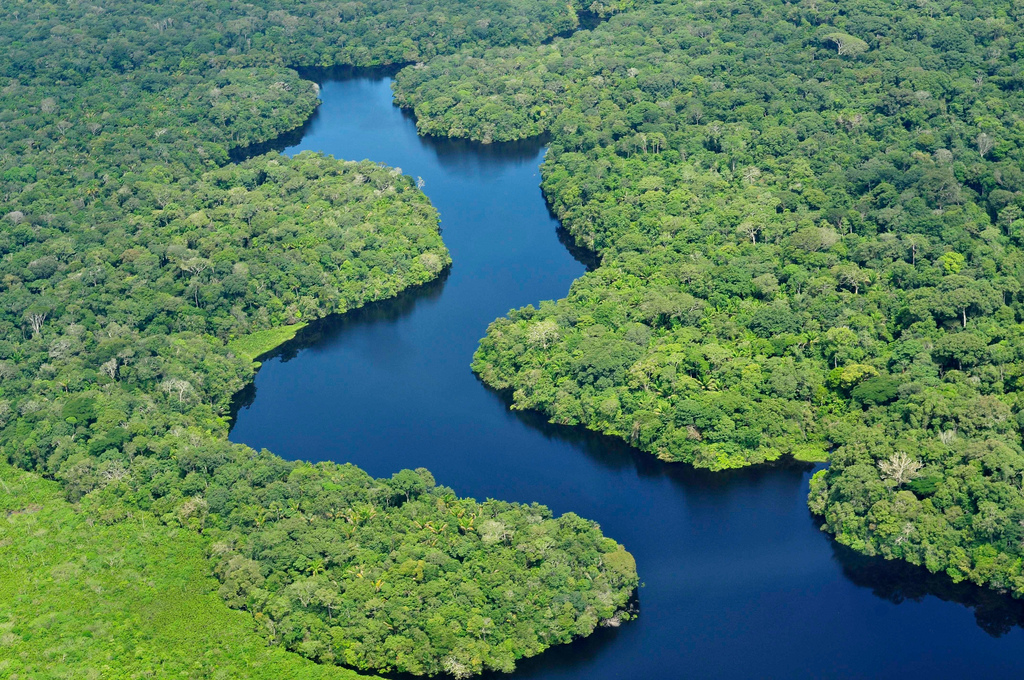Researchers find that the shape of tropical forests determine their stability; to prevent collapse of these ecosystems we must not alter the contours
05/16/2018 / By Ralph Flores

To save our forests, we must first save its shape. This is what scientists have come up with after studying how fires on the edge of the forest have affected its shape and stability.
The findings, which were published in the journal Ecology Letters, also revealed that when these forests lose their natural shape – usually because of excessive logging and land use change – it can alter the landscape from trees to grass, sometimes with sudden and catastrophic effects.
Tropical forests, also known as rainforests or jungles, cover at least 10 percent of all land above sea level, where most of them are located in the area between the Tropic of Cancer and the Tropic of Capricorn. In particular, the Amazon rainforest is the largest, accounting for at least one-third of tropical forests and is also the largest freshwater reserve on earth. However, tropical forests aren’t just areas where a lot of trees are found: They are the lungs of the planet – they take large amounts of carbon dioxide and produce breathable oxygen. They are also home to a great diversity of plants and animals, as well as provide jobs to millions of people. However, with the introduction of illegal logging and subsequent conversion to farms and mines, rainforests are in danger of being degraded and, ultimately, transformed. In the last 40 years, over 20 percent of the Amazon rainforest has disappeared because of illegal logging and farmland development. (Related: Amazon rainforest destruction accelerated by fragmentation.)
Researchers discovered that natural forests adopt a certain shape based on a mathematical relationship between the perimeter of the forest and its area, despite its climate region and size. They gathered this conclusion after studying high-resolution satellite data from protected forests in the Cerrado, a savanna region in central Brazil. They called this the “3/4 power law,” that is, forests grow in a pattern that’s somewhere between a line and a circle. “If a forest could grow easily in all directions, we’d expect a circle,” explained lead author Laurent Hébert-Dufresne, a computer scientist at the University of Vermont, “but what we actually see is more dendritic, a bit like an octopus or deformed circle.”

The effects of the 3/4 power law were consistent – from forests not much bigger than a basketball court to those that cover dozens of square miles. To understand how this works, the team utilized both real-world data and the results of computer models and discovered that fire had a hand in the retention of its shape. In grassland, fires burn easily and can even reach the wet edges of surrounding forests. This creates a battle between the forest’s expansion and the surrounding grassland, which defines the boundary between the two. According to scientists, this interaction is seen in forest patches that converge on a steady-state shape. Interestingly, the data from the model matched with the results gathered from real forests in Brazil.
The data not only shows how forests develop over time, but it also predicts how these will fare in the future. “Stepping back and considering the macro scale – not looking at the shape of every patch, but, instead, at the state of the entire system – the model suggests that the collapse from forest to grassland can be dramatic,” Andrew Berdahl, the senior author on the study and a researcher at the Santa Fe Institute, concluded. “These local, small-scale effects – perimeter growth and edge burning – can lead to a critical transition across a whole forest region between a forest-dominated-state and a grass-dominated-state.”
The main problem when forests are transformed into grassland is that it’s difficult to revert into forests again. “It is like stepping off a cliff,” added Berdahl. “You can’t simply step back up.”
While the current study is limited to forests in Brazil, researchers are looking forward to how the results of their study will translate into different parts of the world. Fire plays an important role in defining the shape of tropical forests in Brazil, but other factors may come into play – such as elephants in Africa or dryness in Australia. In addition, their discovery could lay the groundwork to develop conservation efforts to protect tropical forests – both with individual patches and large regional forests.
“Our fundamental point though is that a forest’s shape is very important,” Hébert-Dufresne concluded, “and that its shape is directly related to its stability.”
Of course, you don’t need to go to a tropical forest to participate in conservation efforts. Learn how you can help by following Environ.news today.
Sources include:
Submit a correction >>
Tagged Under:
3/4 power law, Amazon rainforest, biodiversity, carbon dioxide, Climate, conservation, conservation efforts, deforestation, Ecology, ecosystem, environment, farmland conversion, forest conservation, forest fires, forest preservation, forest protection, illegal logging, jungles, rainforests, tropical forest, understanding nature
This article may contain statements that reflect the opinion of the author





















